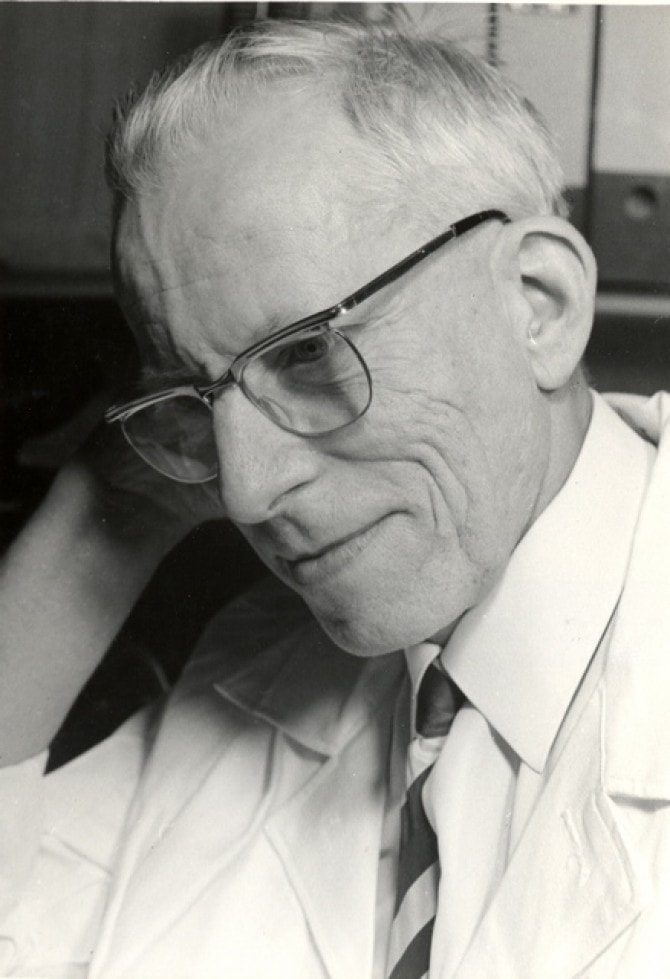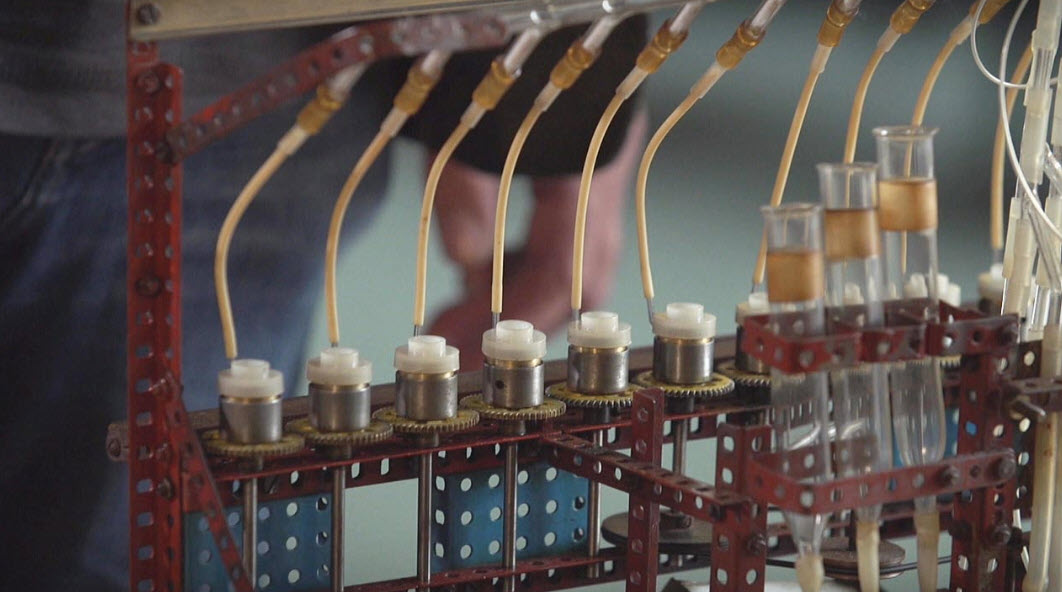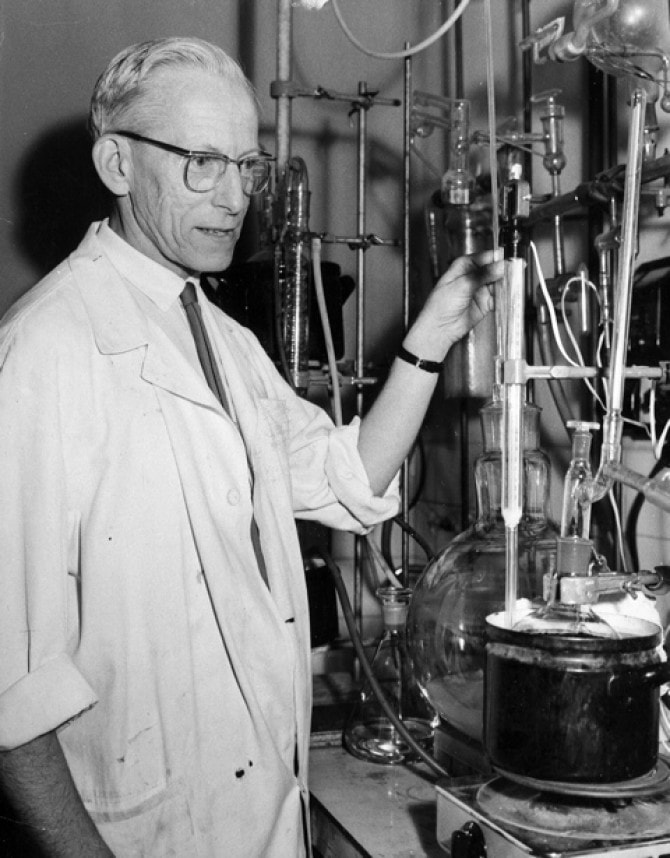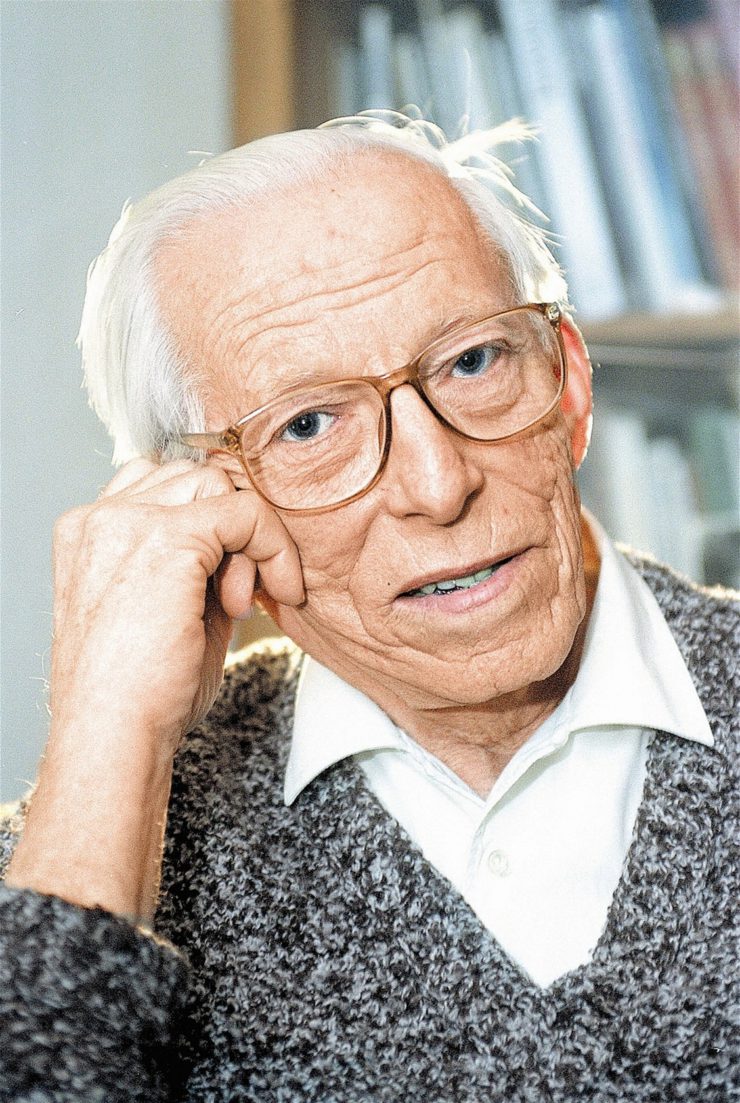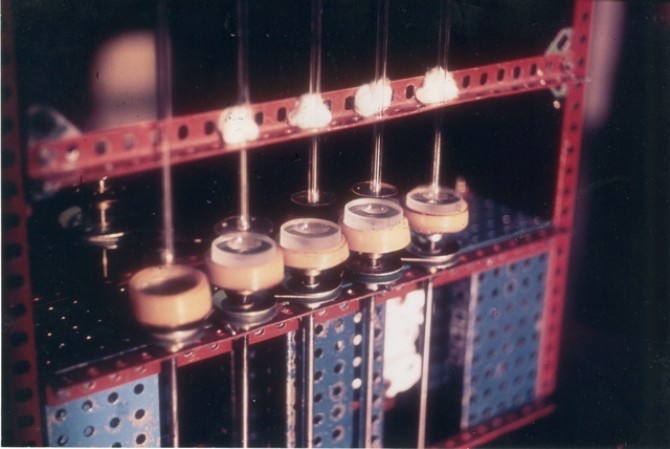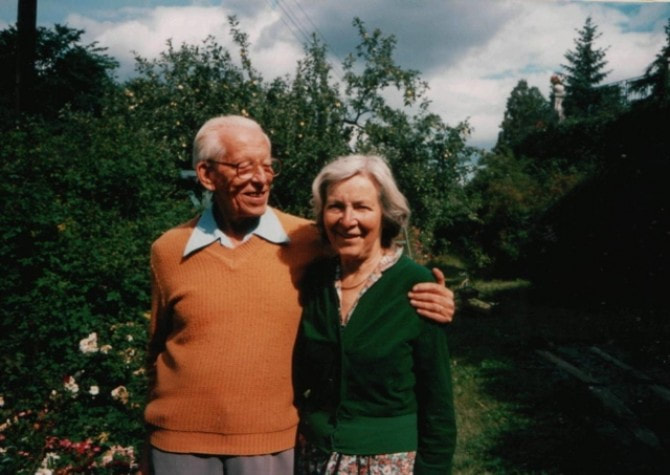Otto Wichterle (1913-1998)
Otto Wichterle's role in the development of contact lenses is arguably the most important to have occurred in modern history.
In December of 1961 he succeeded in producing the first four hydrogel contact lenses on a home-made apparatus built using a children's building kit (Merkur, similar to the American Erector set), a bicycle dynamo belonging to one of his sons, and a bell transformer. All the moulds and glass tubing needed to dose them with monomer were also individually made by himself.
On Christmas afternoon, with the help of his wife Linda, using the machine on his kitchen table, he finally succeeded. He tried the lenses in his own eyes and although they were the wrong power they were comfortable. Thus, he invented a new way of manufacturing the lenses using a centrifugal casting procedure. A few days later, he completed his patent application and produced over 100 lenses by spin casting. He built several new prototype machines using Merkur toys with increasing numbers of spindles which required the stronger motor taken from his gramophone. With these rudimental devices, in the first four months of 1962 they made 5,500 lenses. The early experimental lenses were called Geltakt and the later production lenses Spofalens after the state enterprise SPOFA which manufactured them.
In 1965 National Patent Development Corporation (NPDC) bought the American rights to produce the lenses and then sublicensed the rights to Bausch & Lomb which started to manufacture them in the USA. In 1977 the patents were challenged, mainly by Continuous Curve Contact Lenses and in May 1977 the CSAS sold these patents to avoid any liability if the court case failed. However, Wichterle and NPDC won the court case in 1983.[1]
1. Contact Lens History. andrewgasson.co.uk. https://www.andrewgasson.co.uk/professor-otto-wichterle/
en.wikipedia.org/wiki/Otto_Wichterle
Images and videos approved by the Wichterle family January 2021
In December of 1961 he succeeded in producing the first four hydrogel contact lenses on a home-made apparatus built using a children's building kit (Merkur, similar to the American Erector set), a bicycle dynamo belonging to one of his sons, and a bell transformer. All the moulds and glass tubing needed to dose them with monomer were also individually made by himself.
On Christmas afternoon, with the help of his wife Linda, using the machine on his kitchen table, he finally succeeded. He tried the lenses in his own eyes and although they were the wrong power they were comfortable. Thus, he invented a new way of manufacturing the lenses using a centrifugal casting procedure. A few days later, he completed his patent application and produced over 100 lenses by spin casting. He built several new prototype machines using Merkur toys with increasing numbers of spindles which required the stronger motor taken from his gramophone. With these rudimental devices, in the first four months of 1962 they made 5,500 lenses. The early experimental lenses were called Geltakt and the later production lenses Spofalens after the state enterprise SPOFA which manufactured them.
In 1965 National Patent Development Corporation (NPDC) bought the American rights to produce the lenses and then sublicensed the rights to Bausch & Lomb which started to manufacture them in the USA. In 1977 the patents were challenged, mainly by Continuous Curve Contact Lenses and in May 1977 the CSAS sold these patents to avoid any liability if the court case failed. However, Wichterle and NPDC won the court case in 1983.[1]
1. Contact Lens History. andrewgasson.co.uk. https://www.andrewgasson.co.uk/professor-otto-wichterle/
en.wikipedia.org/wiki/Otto_Wichterle
Images and videos approved by the Wichterle family January 2021
|
|
Forget the Frames: Otto Wichterle Story (Czech language youtube video) Even without completely understanding what is being said this is extremely interesting, informative and entertaining |
|
Troublemaking Genius (2005) Tomáš Kudrna Director, Screenwriter http://filmcenter.cz/en/film/detail/795-troublemaking-genius Synopsis Wichterle is a biographical documentary about Otto Wichterle, the inventor of soft contact lenses, an invention used today by more than 100 million people all over the world. The sale of patents could have made him an enormously rich man, had he not lived in Communist Czechoslovakia. His main interest was the application of hydrophilic gels in healthcare. As an individual, he was not afraid to speak out against the totalitarian regime. He initiated the 2000 words manifesto of 1968. His story is that of a charismatic personality who despite difficulties was able to see his ideas finalized in their practical use. |
|
|
|
Wichterle (Trampled Project Czech Documentary) |

